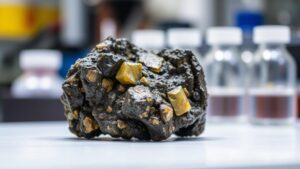How to Use Lightweight Classifiers to Process Dry Pay Dirt Efficiently
How to Use Lightweight Classifiers to Process Dry Pay Dirt Efficiently
Efficient processing of dry pay dirt is a critical aspect of mining and prospecting. Lightweight classifiers provide an effective solution for separating valuable materials from waste. This article delves into the principles of lightweight classifiers, their operational advantages, and practical applications in the field.
Understanding Lightweight Classifiers
Lightweight classifiers are tools designed to separate materials based on size and density. typically consist of a sieve or screen that allows smaller particles to pass through while retaining larger ones. The efficiency of these classifiers stems from their ability to function rapidly, allowing prospectors to process larger quantities of pay dirt with minimal effort.
Benefits of Using Lightweight Classifiers
The adoption of lightweight classifiers in processing dry pay dirt offers several advantages:
- Portability: Their lightweight construction enables easy transportation to various sites.
- Time Efficiency: They facilitate quicker separation of materials compared to traditional methods, expediting the overall mining process.
- Cost-Effective: Lightweight classifiers require lower upfront investment and operating costs, making them accessible for smaller operations.
Operational Principles
Lightweight classifiers operate based on two primary principles: particle size segregation and density differentiation. Dry pay dirt usually consists of a mixture of sand, silt, clay, and potentially valuable minerals. effectiveness of a classifier relies on its mesh size and the method of operation.
- Particle Size: By selecting the appropriate mesh size, users can effectively control which materials are retained and which are allowed to pass through.
- Density Water Use: Introducing water during classification can further enhance the separation process, with lighter materials being washed away while heavier particles remain.
Real-World Applications
Case studies demonstrate the practical application of lightweight classifiers in various mining scenarios. For example, a small-scale gold prospector in Nevada reported a 30% increase in processing speed when employing a lightweight classifier compared to manual sifting methods. The classifier allowed for the rapid processing of larger quantities of pay dirt, leading to a more efficient recovery of valuable materials.
Best Practices for Effective Use
To maximize the efficiency of lightweight classifiers, consider the following best practices:
- Choose the Right Mesh Size: Selecting a mesh size that corresponds to the typical size of the valuable minerals in your pay dirt is essential.
- Incorporate Water Wisely: While water aids in separation, excessive use can lead to loss of fine materials. Experiment with water levels to find the optimal balance.
- Regular Maintenance: Ensure that classifiers are clean and free from blockages to maintain optimal operation.
Conclusion
Lightweight classifiers are indispensable tools for efficiently processing dry pay dirt. By understanding their operational principles and leveraging best practices, miners can enhance their productivity while minimizing costs. The integration of these classifiers into everyday operations not only streamlines processes but also maximizes the recovery of valuable resources.
By adopting these methods, prospectors and miners can position themselves favorably in the competitive field of mineral extraction, ensuring that their efforts yield tangible returns on investment.



